Most of the fighting during WWI in Belgium took place along
what was known as the “Ypres Salient”, a small protrusion of Allied held
territory around the city of Ypres into German-controlled territory. After the
stalemate began in late 1914 and both sides dug in with trenches, there were
three major battles brought about by allied offensives around Ypres, the most
famous one being that of Passchendaele in the latter half of 1917. The three battles plus frequent artillery
fire in between leveled Ypres to the ground to the extent that by 1918 there
was not a single house or tree still standing in the town.
It is estimated that between 500,000 and 600,000 soldiers on
both sides died over the four years along the Ypres Salient. Those stats are
part of others I wasn’t familiar with before this visit, including that the
total number of combatants killed on all fronts in WWI is estimated around ten
million but that only around a half million civilian deaths took place. That’s
a big difference from WWII which was overall less lethal for soldiers but
aerial bombing led to higher a ratio of civilian deaths compared to military
ones.
Consequently, everything you see in Ypres is a post-WWI
construction of what existed before the war, but they did a pretty good job
getting the town back in shape. Ypres most famous building is The Cloth Hall, a
nearly 500 foot long stone building with belfry tower at the center that was
the biggest medieval municipal town hall in Europe. Nowadays it houses a city
museum and also the larger Flanders Fields Museum about WWI focusing on the war
in the region. The other famous site in
town is the Menen Gate, a post-WWI construction on the site of an old city gate
into which the names of more than 50,000 Commonwealth soldiers who died on the
front but whose remains were never identified are inscribed. Every night at
8:00 P.M. there’s a well-attended military ceremony called “Last Post” to
commemorate the fallen at the Menen Gate.
Passchendaele is a name I wasn’t very familiar with until I
was in Canada recently and found it referenced extensively at the Canadian War
Museum in Ottawa. The significance is that the during the Third Battle of Ypres
whose aim was to take some land east of the city toward the village of
Passchendaele, Canadian troops relieved ANZAC troops to successfully take some
targeted ground but at a huge casualty cost.
The Tyn Cot Cemetery, the largest British Commonwealth military cemetery
anywhere in the world now stands at the site of several German bunkers which
were not removed. Another 35,000 names of missing soldiers whose remains were
not identified but could not fit on the Menen gate are inscribed here.
I met up with Ann, Jeroen, PJ, and Lucas again for a second
time at Tyn Cot along with Ann’s parents Rita and Andre who I have only the
vaguest memories of from their visit to the U.S. when I was six. Our second
stop was the Memorial Museum 1917 Passchendaele, which occupies an old “castle”,
more of an elegant country house, in nearby Zottegem. “Man this place is huge!” I thought as we
spent several hours of the afternoon walking through the extensive exhibits on
the War and the Passchendaele Battle. When I emerged in a recreation of a
trench on the far side of the lawn beside the museum, I realized that the
exhibits couldn’t be confined to the building and its basement that they were
so extensive but rather extended underground a significant distance away.
I
found it almost as impressive as the better-known Flanders Fields Museum in
Ypres.
After enjoying some beers at the outdoor café at the museum
on the beautiful afternoon, they took me to “Coming World Remember Me”, an modern
exhibition in a regional park. Anyway, the outdoor installation by Belgian
artist Koen Vanmechelen consists of 600,000 identical clay balls each inscribed
with the name of a soldier from both sides who died during the four years of war
in Belgium. So that’s what 600,000 looks like?
I don’t know; I’m not too much into modern non-representational art.
Rita made the comment “Ze mooen croyen hier!” I’m probably not spelling it
right, but it means “They really need to weed here!” I got a chuckle, because
that’s the exact comment my mother would have made on noticing the weeds
growing between the clay balls in the exhibition.
The following morning on my way eastward from my hostel
location I stopped at Vladslo German Military Cemetery near Diksmuide. I The
mood is a bit different there and I was the only visitor at the time. Vladslo
is famous for a work of art that overlooks the graves – “Grieving Parents” by sculptor
Kathe Kollwitz who created it as a tribute to her son Peter who was killed at
the front in Belgium in 1914.

 Ypres, Flanders, Belgium
Ypres, Flanders, Belgium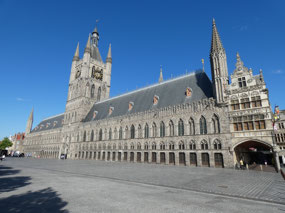

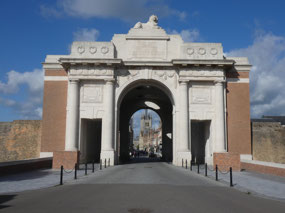
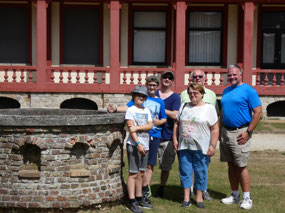

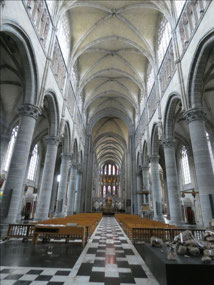
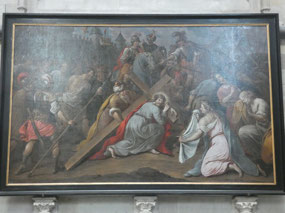
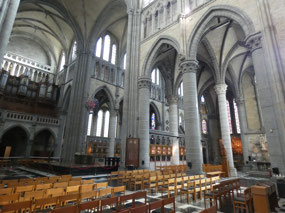
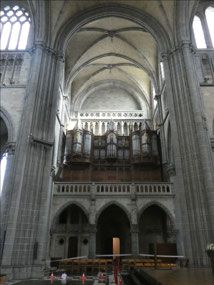
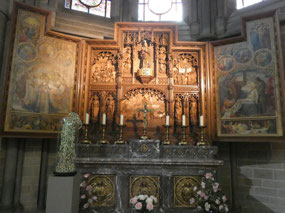
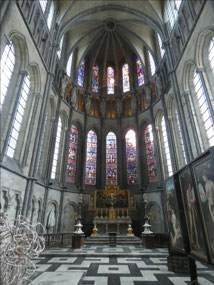
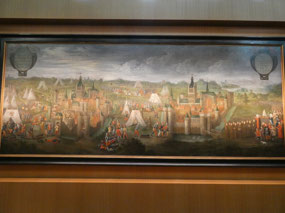
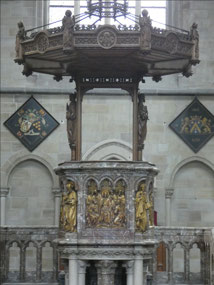
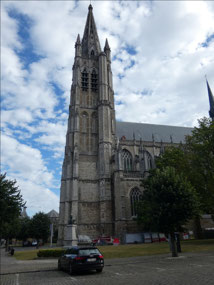
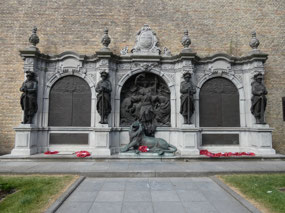
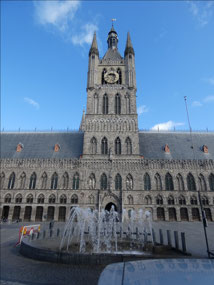
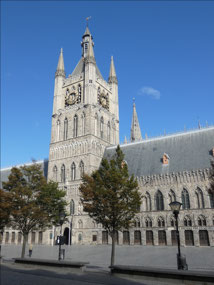
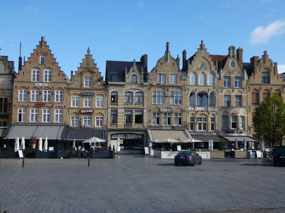
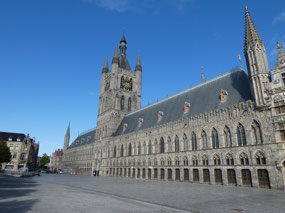
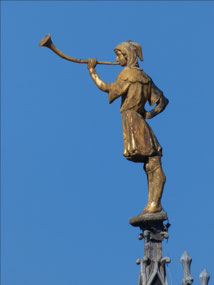
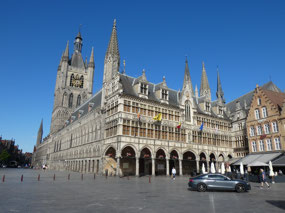
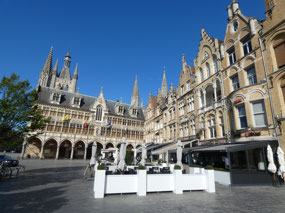
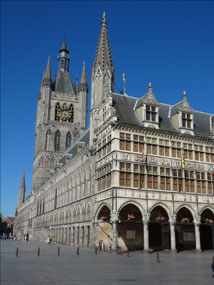
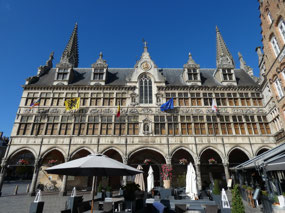

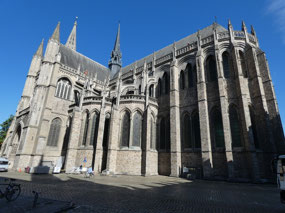
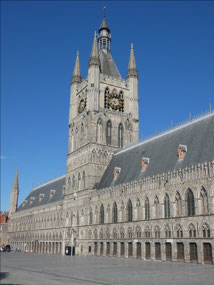


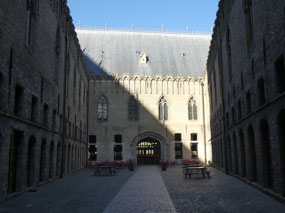
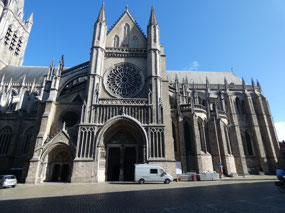
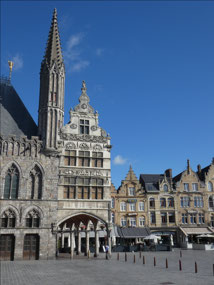
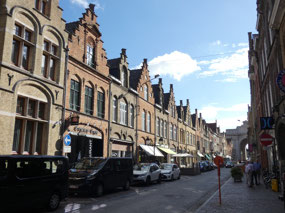
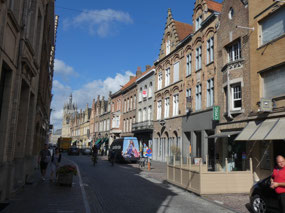

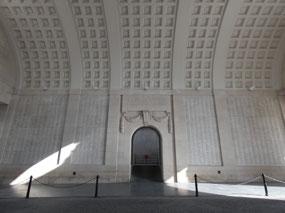
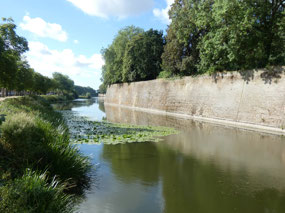
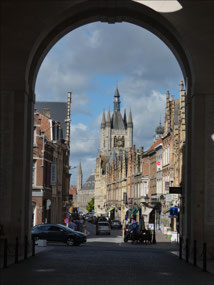
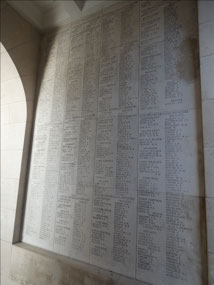
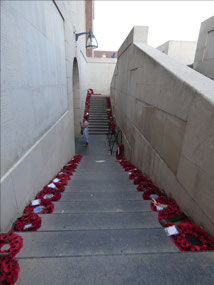

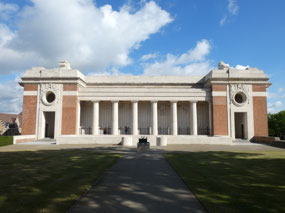
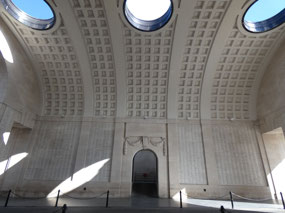
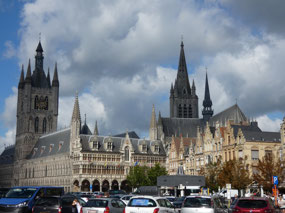
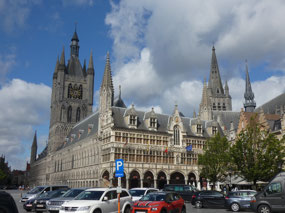
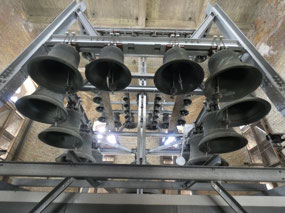
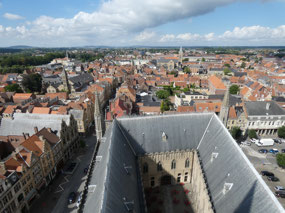
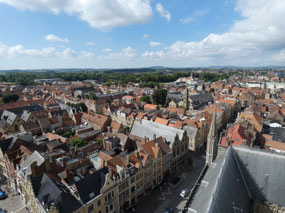
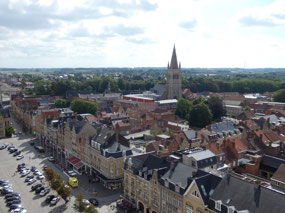
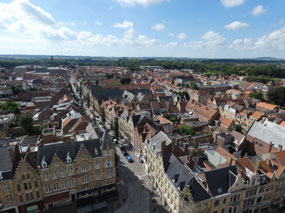
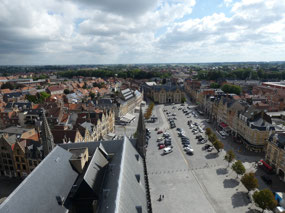
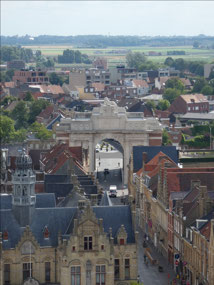
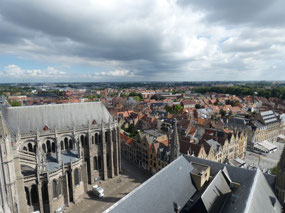
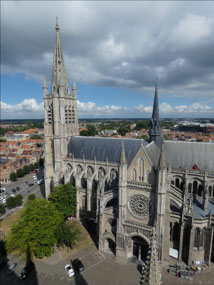
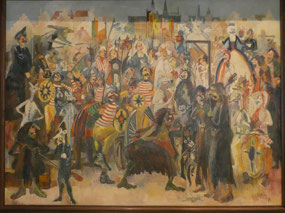
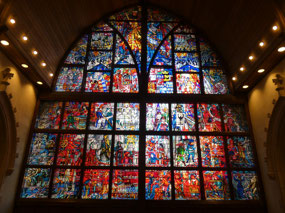
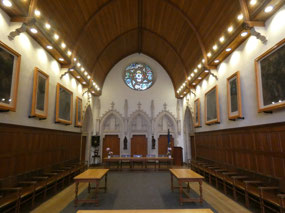
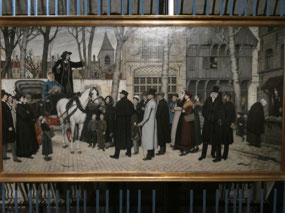
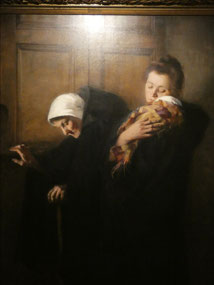
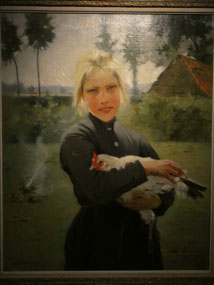

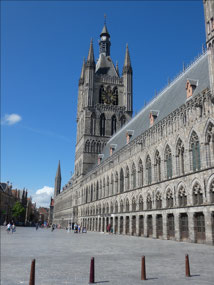
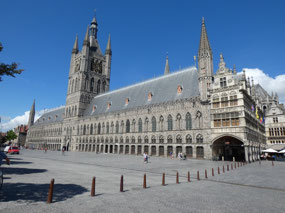
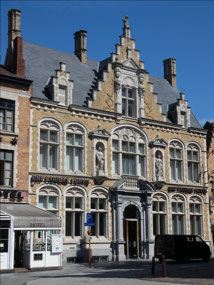
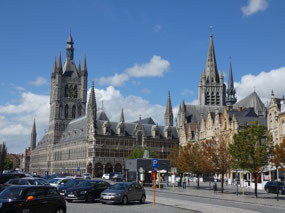

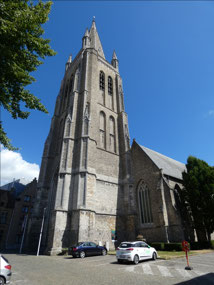
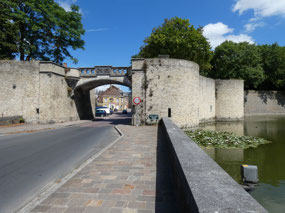

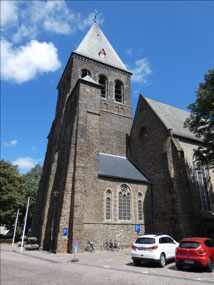
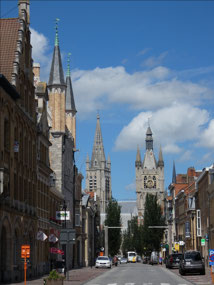
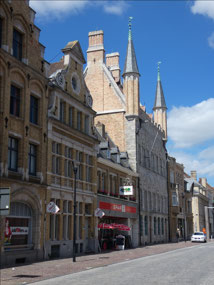
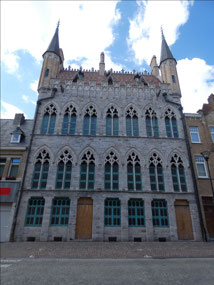
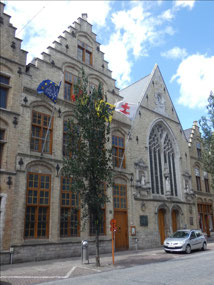
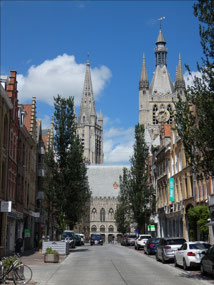
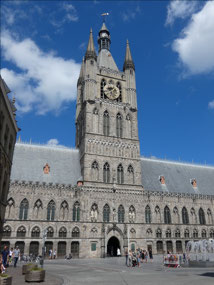

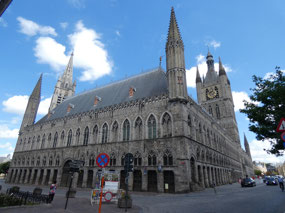
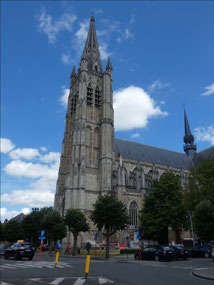
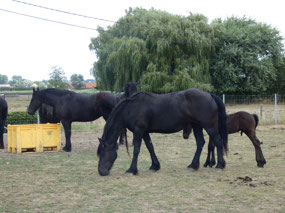
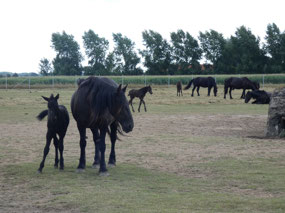
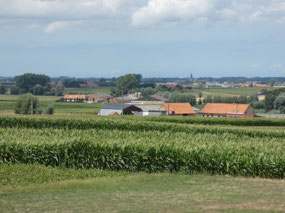
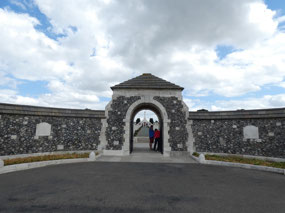
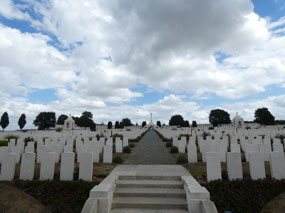
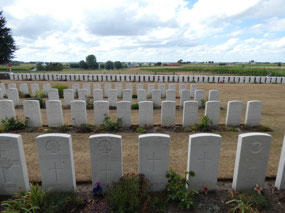
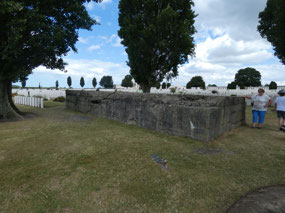
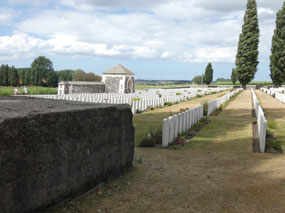
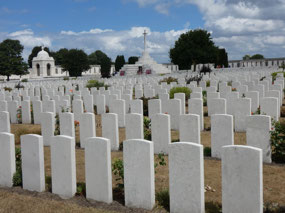
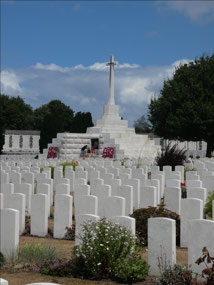
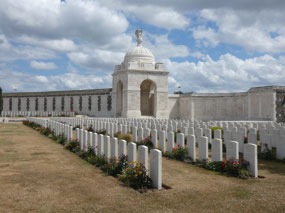
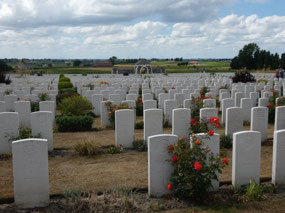
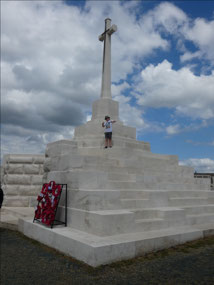
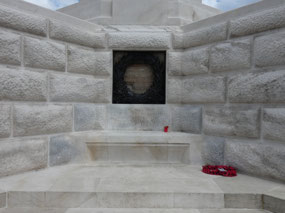
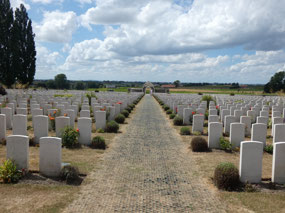
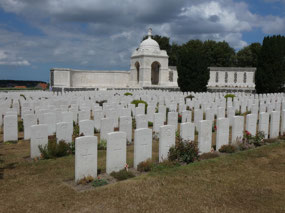
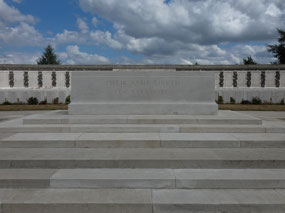
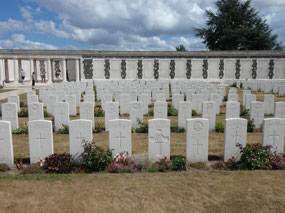

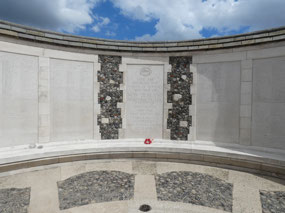
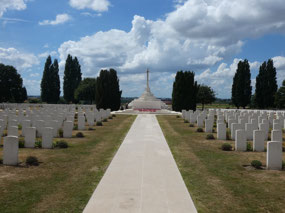
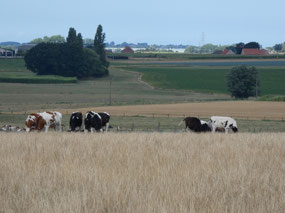
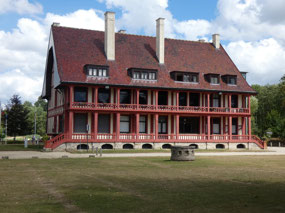
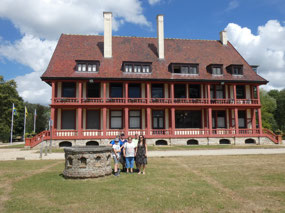
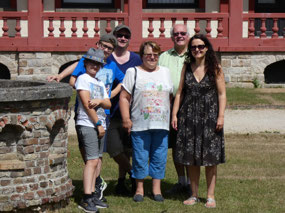
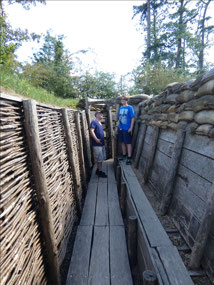
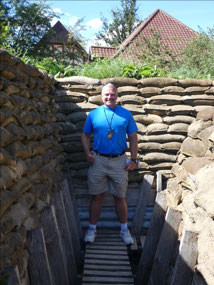
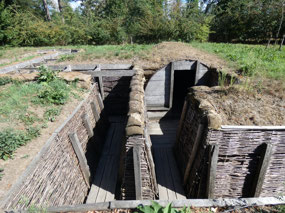

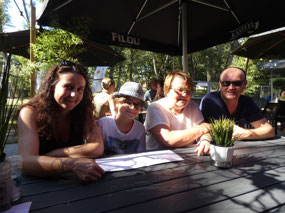
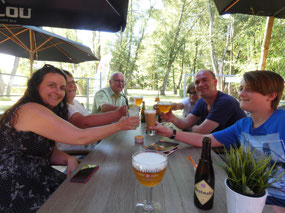
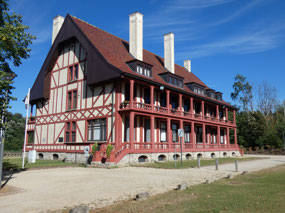
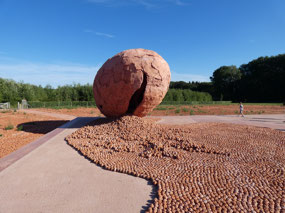
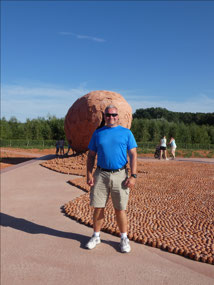
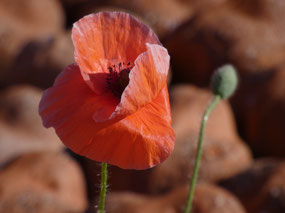
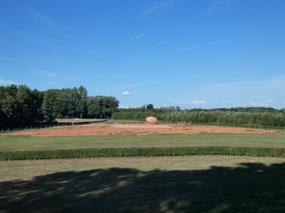
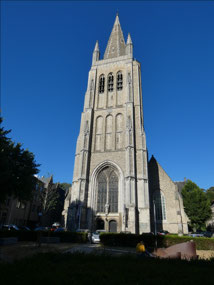
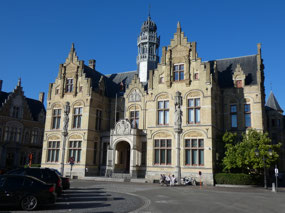
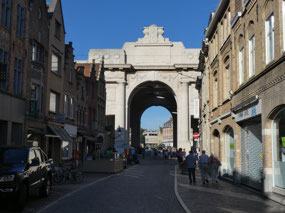
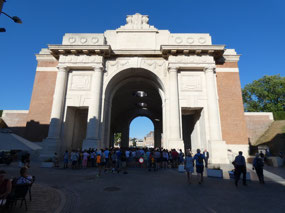
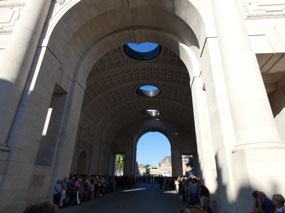
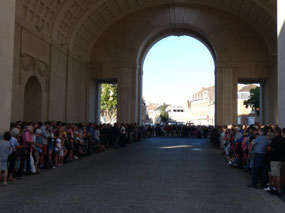

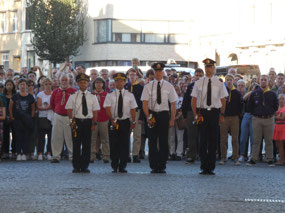
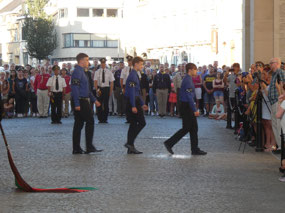
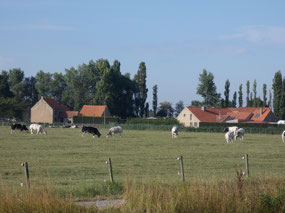
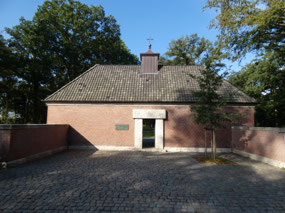
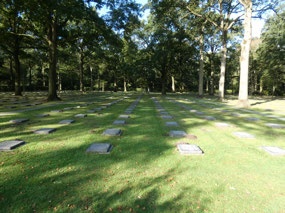
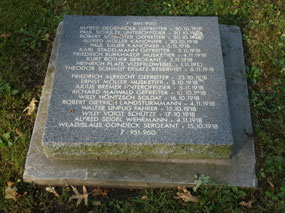
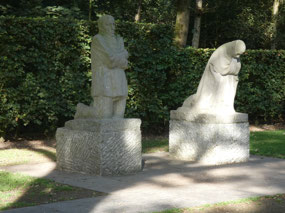

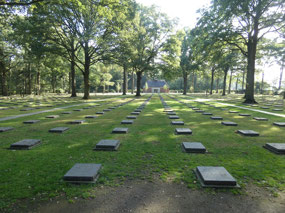
2025-05-22